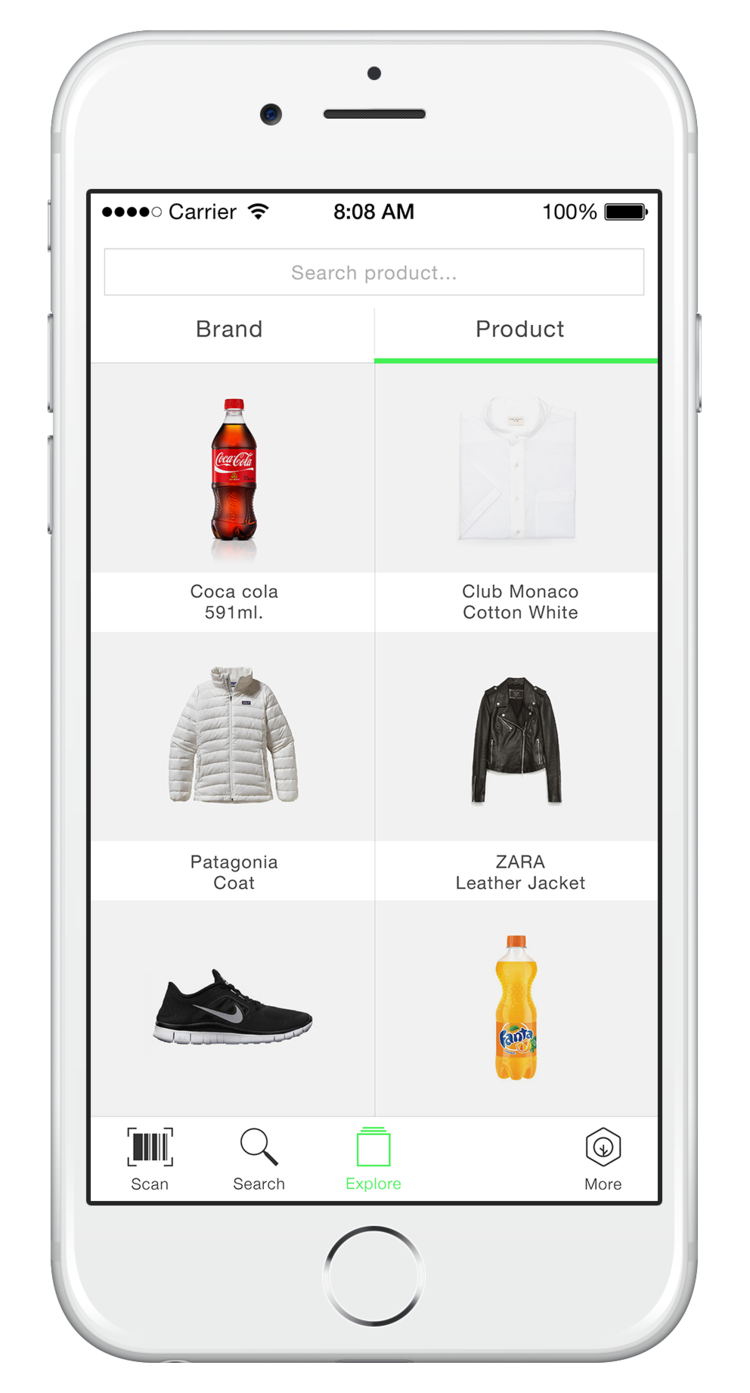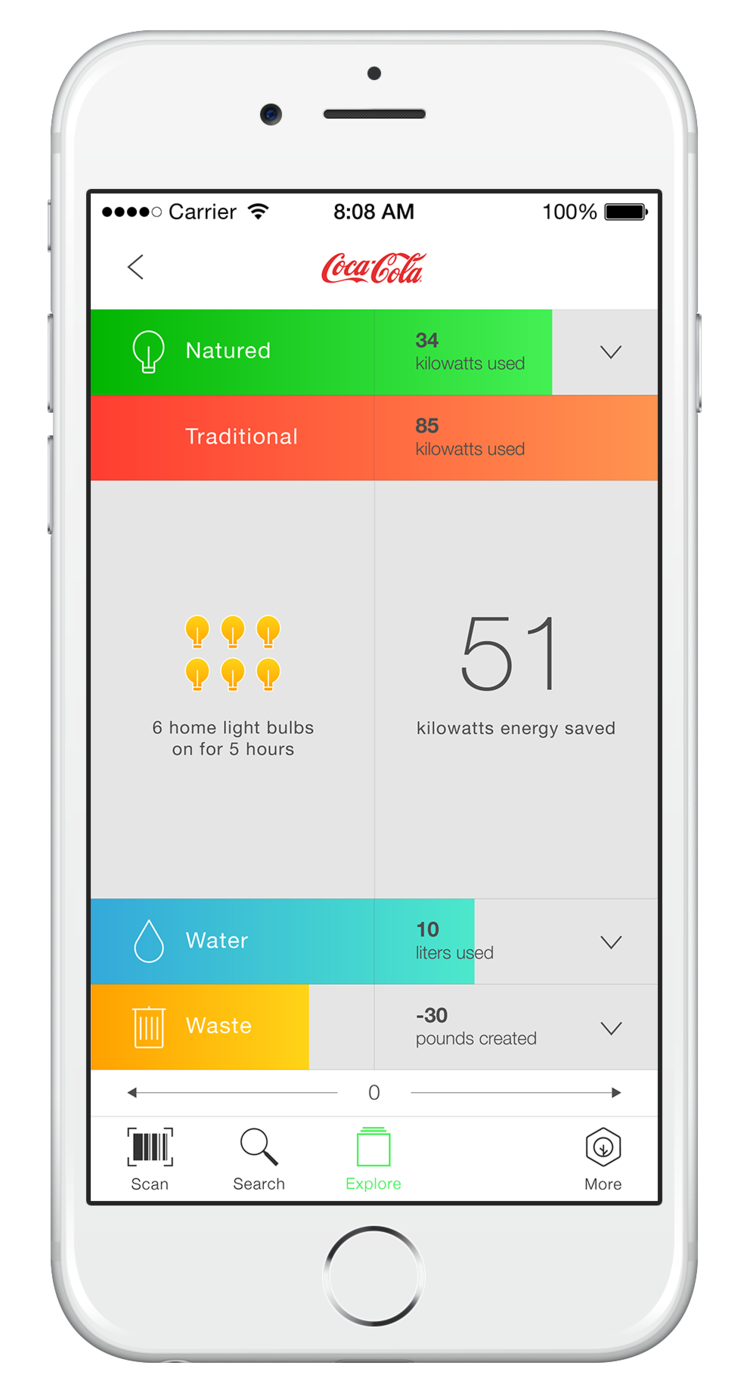Natured
Communication design/ System design
Over view:
The amount of plastic produced and used today is not environmentally sustainable. Its source is from oil, a fossil fuel which is a resource we are running out of. Extraction, refining, processing, and manufacturing are all incredibly resource intensive and polluting.
Food packaging is largely made from plastics as is polyester fabric, now the most produced fiber in the world. It's unrealistic for consumers to stop their demand of food packaging and polyester cold turkey, but we cannot as a society continue to demand as much plastic as we have been if we want to start reducing our environmental impact.
Role
Communication Strategy, Visual Design, UI Design, UX researcher
Credit:
Amer Jandali, Hannah Phang, Rod Muñoz-Valencia, Barbara Fang, Alex Wu
Research
From start our client want us to design a tool or system for manufacturers to communicate transparency of the materials and to help consumers understand the geographic provenance and sources of products and materials. Like how consumer care about the provenance of the wine and coffee.
However after interview 20 consumers, we found out the region of the plastic doesn't matter for the consumer, there for there's no reason for them to change their shopping behavior.
Needs
- CLIENT NEEDS
To work on plastic issue by tasking us to get people to care about where things come from. If we can communicate about the origin, users can make smarter purchasing decisions, such as choosing products that use our clients packaging or fabric material that was made sustainably.
- CUSTOMER NEEDS
Our clients users are food packaging giants and clothing manufacturers, so we wanted to be mindful of that and those products' users. We completed primary research with industry experts from the innovation team at Pepsi Co. to board members of Greenpeace. We wanted to start by learning what has worked well in their experience about communicating about sustainability and where products come from. We also completed competitive audits of how other brands communicate about sustainability and provenance, such as Chiquita Banana, Lush, Good Guide, and Icebreaker.
What we learn are customer needs:
Less jargon when they learn about the problem and the product information.
Reliable information that they can trust.
The information needs to be let them feel self related.
Goals
Our goal is to create a truthful and reliable tool and system that makes people care about where products come from, and communicates that information clearly.
Not Micromidas branded
Non-judgmental
Individual product tracking
Multiple brand/industries
User journey
By research with industry experts from the innovation team at Pepsi Co. to board members of Greenpeace and their existing way to communicate, we are be able to mapping out a potential user journey.
We found out we need to make a system to help people better understand the problem and engage into the social change.
Design process
- Branding (Making people curious)
We want to getting people curious start with an interesting name and compelling logo so the name have to be: Memorable, close to a common language and easy to adapt.
The logo we decided to use the combination of chemical compound and branch. Chemical compound represented the technique that micromidas use to create plastic, branch means it is environmental friendly.
- Certification Rating system (building trust)
We will need an official group to authenticate the information we are providing which will communicate reliability and trustworthiness. This independent body should have a set of criteria that can be used to certify products and a rating system so that consumers can easily tell the value of a product in a quick snapshot.
The institute certified based on:
Diverted from a waste stream
From plants, agriculture, marine, or foresty
From a resource that can overcome usage and consumption
From a resource that cannot serve as a food stream from humans or animals
-App (layered information)
In order for people to understand the information better and more related to their personal life, we created a information architecture and compare to the tangible information in people's daily life, helping consumer to understand the environmental impact of the product more clearly.
Through the app, users can scan the barcodes of products or use the search or browse function.
Once on a product page, they can see the product, it's rating, and more detail about what went into that rating, the energy, water, and waste used to make that product, from raw material to final manufacturing.
For example, our clients' products' raw material comes from agricultural and industrial waste streams, therefore they have a negative waste impact since they are diverting waste. Since users may not know what 34 kilowatts of energy or -30 pounds of waste means or if that is a good number or not, they'll be able to click through to compare it to the industry standard and a daily life comparison.
How it works:
- Natured campaign (changing behavior)
We want to people to more engage to this movement and encourage them spread information for more people to getting curious, we created the Natured challenge campaign.
By separate our consumer in four different categories: Second Natured (Environmentalist) / Mother Natured (Parents) / Force of Natured ( Athletics) / Good Natured (Students)
We created different challenge for each categories (i.e: carry your own water bottle for a week) People can choose which categories will be better fit for them and take photo while they finishing the challenge. Posting the photo on their social media by using #naturedchallenge.
In addition, every person who completes the Natured Challenge will receive the Natured Guide, a book that is a collection of some incredible Natured moments to admire and use for inspiration to continue the Natured journey.
Clients Feedback
• Great job
• We included more elements in our system than other tools with the same goal which make sense to really bring the tool and the system to life
• Include more information about the actual origin of the products
• Wants to move forward and get feedback from his clients
























